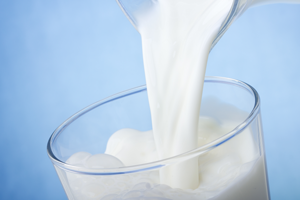 Keeping your bones healthy as you age is vital, especially to prevent thinning bones, also known as osteoporosis. Osteoporosis can result in painful fractures, but the risk can be lowered with calcium and vitamin D, exercise, and lifestyle changes.
Keeping your bones healthy as you age is vital, especially to prevent thinning bones, also known as osteoporosis. Osteoporosis can result in painful fractures, but the risk can be lowered with calcium and vitamin D, exercise, and lifestyle changes.
There are 206 bones in the adult human body. Each bone serves a crucial function whether it’s providing protection to organs, anchoring muscles or storing calcium.
What is osteoporosis?
Osteoporosis is a bone disease that causes the bones to become thin, weak and brittle. The bones can become so brittle that a fall, bending over or sneezing can cause a fracture.
The bones are normally constantly being broken down and replaced by new bone. When someone is young, the body makes bones faster than it can break down old bone causing the bone mass to increase. Most people reach their peak bone mass by their early 30s. Osteoporosis occurs when the removal of old bone out-paces the creation of new bone.
There are typically no symptoms in the early stages of osteoporosis. Once the bones have been weakened, signs may include loss of height, a stooped posture, or bone fracture that occurs more easily than expected with associated pain.
Taking care of your bones is important to keep them from fracturing. One of the most serious complications of osteoporosis is bone fractures, especially in the spine or hip. Hip fractures can result from a fall and can lead to disability and even death. Spinal fractures can occur even if you haven’t fallen because the vertebrae in the spine can weaken to the point where they crumble.
Are some people at a higher risk than others for osteoporosis?
Osteoporosis affects women more than men and is seen in all races. Some factors make people more susceptible to osteoporosis.
Risk factors for osteoporosis include:
- Getting older
- A family history of osteoporosis
- Being a white or Asian woman
- Having a low bone density
- A low-calcium diet
- Being physically inactive
- Having an eating disorder
- Smoking
How can I take care of my bones and prevent osteoporosis?
There are a few ways that people can prevent osteoporosis and keep their bones healthier. One is regular physical activity, which can help build stronger bones and slow bone loss. This should include weight-bearing and muscle-strengthening exercises.
 Paying attention to your calcium and vitamin D intake can also help keep your bones healthy. Calcium is necessary to build bone tissue. Good sources of calcium include dairy products, almonds, leafy green vegetables, sardines or canned salmon with bones, and fortified soy milk.
Paying attention to your calcium and vitamin D intake can also help keep your bones healthy. Calcium is necessary to build bone tissue. Good sources of calcium include dairy products, almonds, leafy green vegetables, sardines or canned salmon with bones, and fortified soy milk.
The National Osteoporosis Foundation recommends:
- 1,000 mg a day of calcium for adults under 50
- 1,200 mg a day of calcium for adults over 50.
Food remains the best source of calcium, but if you are unable to get enough calcium from your diet and have concerns about taking calcium supplements, you should discuss this with your physician.
The body uses vitamin D to absorb calcium. Good sources of vitamin D include sunlight, oily fish such as tuna and sardines, egg yolk and fortified milk.
The Institute of Medicine recommendation for vitamin D intake is:
- 600 international units a day for adults ages 19 to 70
- 800 international units a day for adults over the age of 70
Also, making lifestyle changes such as not smoking and not drinking more than two alcoholic beverages a day can help prevent osteoporosis.
If you are believe that you are at risk for osteoporosis, request an appointment or call 772-288-2400 today to meet with one of our physicians.